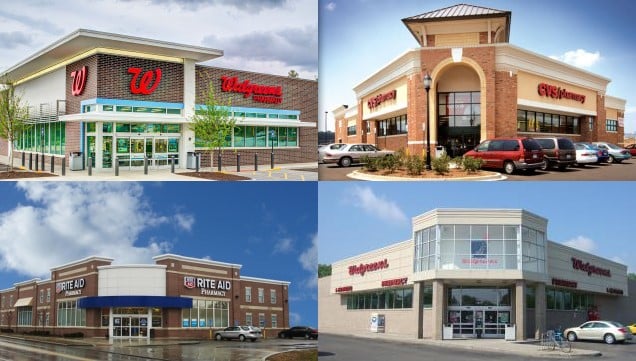
CHICAGO—Transaction volume in the drug store sector slowed over the past 18 months due to investor trepidation about the proposed merger between the retail giants Walgreens and Rite Aid, according to a new study out from the Boulder Group, a net lease firm in suburban Chicago. And until buyers know all the details of the deal, recently delayed and then approved by the government, they will continue to hedge their bets.
“Investors have a framework for how the merger will proceed but do not know store level specifics,” Randy Blankstein, president of Boulder, tells GlobeSt.com. “As soon as there is detailed store level closing level information transaction volume will pick up to previous levels and thus should be a boost to the net lease sector.”
The government was uncomfortable with the scope of the original merger, which in June called for the Walgreens Boots Alliance to buy 2,186 Rite Aid stores for $5.175 billion. The latest version, approved by the Federal Trade Commission in September, calls for the acquisition of 1,932 Rite Aid stores, three distribution centers and existing inventory for $4.38 billion by Walgreens. The acquisition has begun, and the firms' officials say they should complete it sometime in the spring. Walgreens also recently announced it will close about 600 stores in 2018 and 2019.
Cap rates for the single tenant drug store sector increased 14 bps in the third quarter of 2017 to 6.1% versus the prior year, according to Boulder. Cap rates for CVS properties declined by 5 bps to 5.65%, while Rite Aid and Walgreens properties experienced significant increases of 25 and 20 bps to 7.25% and 6.00% respectively. Blankstein attributes these increases to drug store landlords adding a supply of lower quality assets to the market.
Many of the new assets on the market have Rite Aid outlets. One year ago, 42 Rite Aids were on the market. This year, the number stands at 65, a boost of 55%. Owners had held on to “Rite Aid assets in 2016 while there was still a possibility that Walgreens would acquire all Rite Aid stores,” according to Boulder. But “as the complete merger is no longer viable, these owners have brought a significant amount of supply to the market.”
Landlords currently have 192 Walgreens on the market, a 42% jump over last year at this time, and 120 CVS stores are up for a sale, a 41% boost.
“Transaction velocity for the remainder of 2017 in the net lease drug store sector should remain at a similar pace to 2016,” Boulder adds. “However, drug store assets with strong sales performance in top tier markets and no Walgreens/ Rite Aid overlap will garner demand from investors.”
“Former Rite Aids that turn into Walgreens will be significantly more desirable then they are currently,” Blankstein adds.
© 2025 ALM Global, LLC, All Rights Reserved. Request academic re-use from www.copyright.com. All other uses, submit a request to [email protected]. For more information visit Asset & Logo Licensing.








